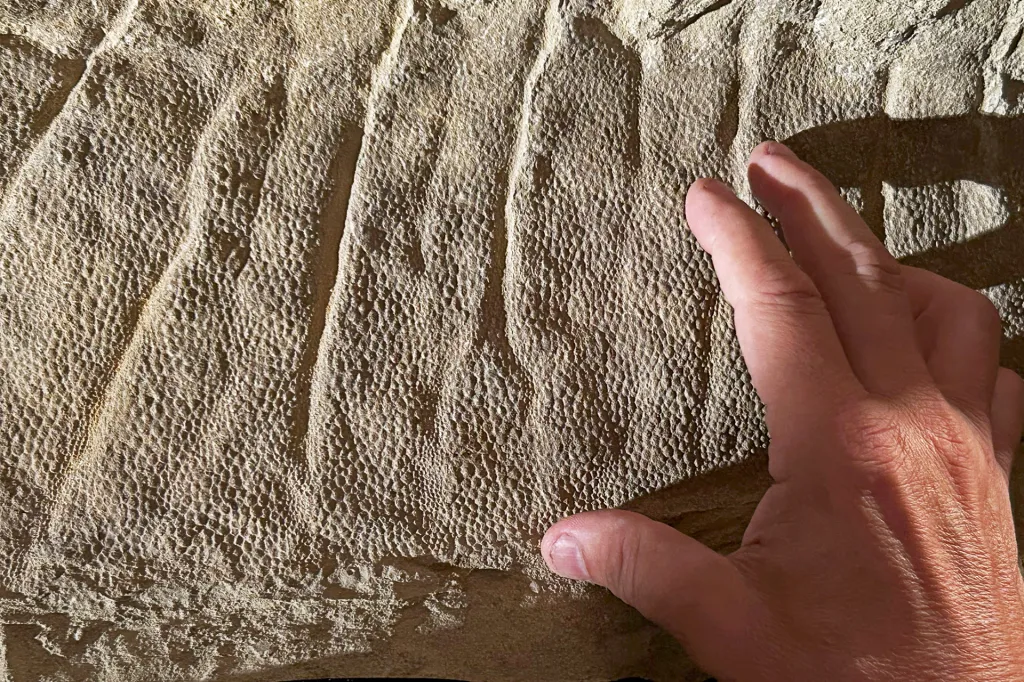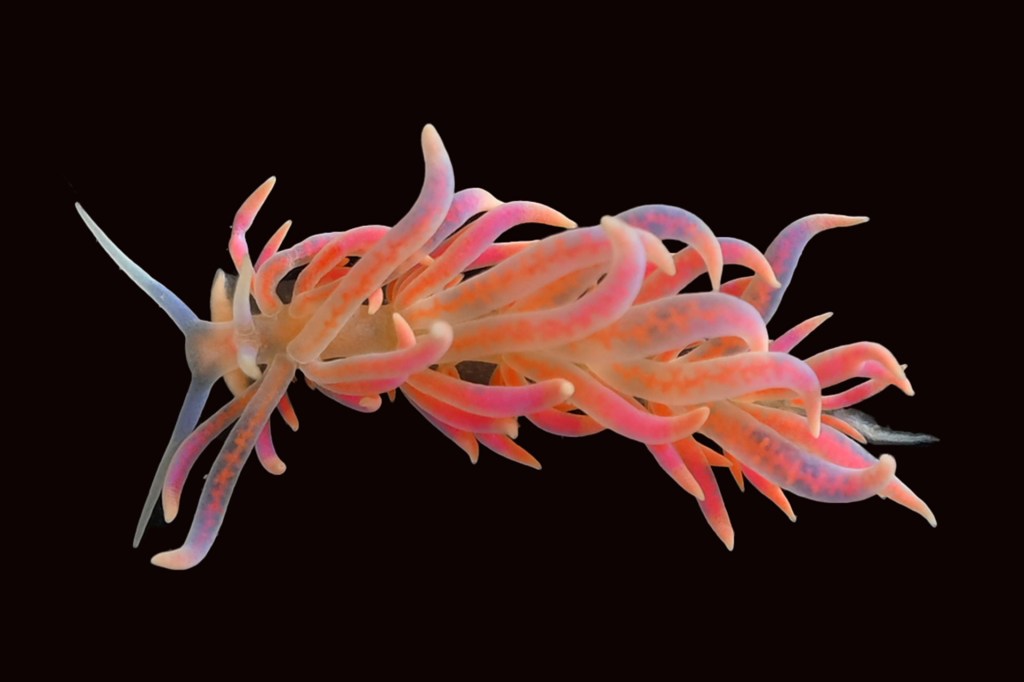
Below the ocean surface lurks a thief. The animal is called a nudibranch (noo-dih-brank). It is found in all the world’s oceans.
These colorful sea slugs do not have a shell. They are not spiny. So how do they stay safe? They steal from stinging sea creatures! They store the stings and use them later. Scientists are studying this ability. It may help them better understand human systems.

This Spanish shawl nudibranch has long antennas. They are called rhinophores.
DOUGLAS KLUG—GETTY IMAGES
Stay Away
There are 3,000 species of nudibranchs. One group is the aeolids. They are covered in soft spikes called cerata. These body parts are used for breathing. They are also used for stinging.
Aeolid nudibranchs eat jellyfish tentacles. They eat anemones and other stinging creatures, too. When they do, they swallow stinging cells. But they do not digest them. They store these cells in their cerata. When a predator tries to eat them: ouch!
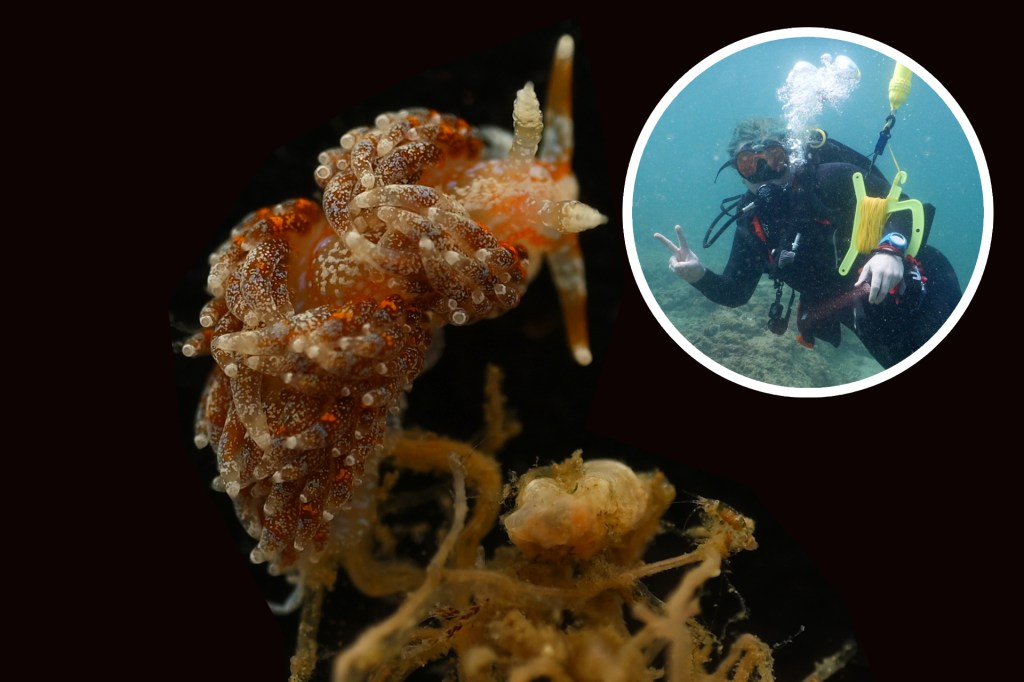
This photograph of a nudibranch was taken by Jessica Goodheart (inset) while scuba diving in Australia.
JESSICA GOODHEART; INSET: KARA LAYTON—UNIVERSITY OF TORONTOThe predator gets “a mouthful of these stinging structures. And any venom that comes with them,” says scientist Jessica Goodheart. She studies these creatures.
Studying the Sting
Goodheart has a lab. It is at the American Museum of Natural History. That is in New York City. She is interested in how nudibranchs are able to use stolen cells.
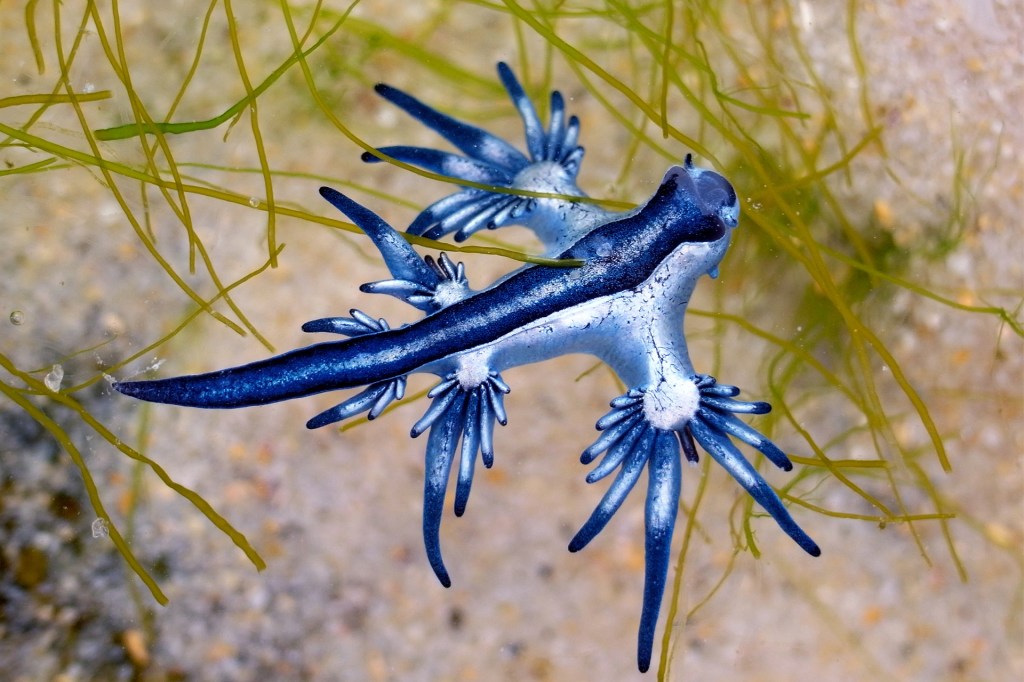
The blue dragon nudibranch is small but mighty. It grows to about an inch long, but has a powerful sting.
S. ROHRLACH—GETTY IMAGESWhen an unknown thing enters our bloodstream, it is attacked. That is the job of our immune system. So why does this not happen with nudibranchs?
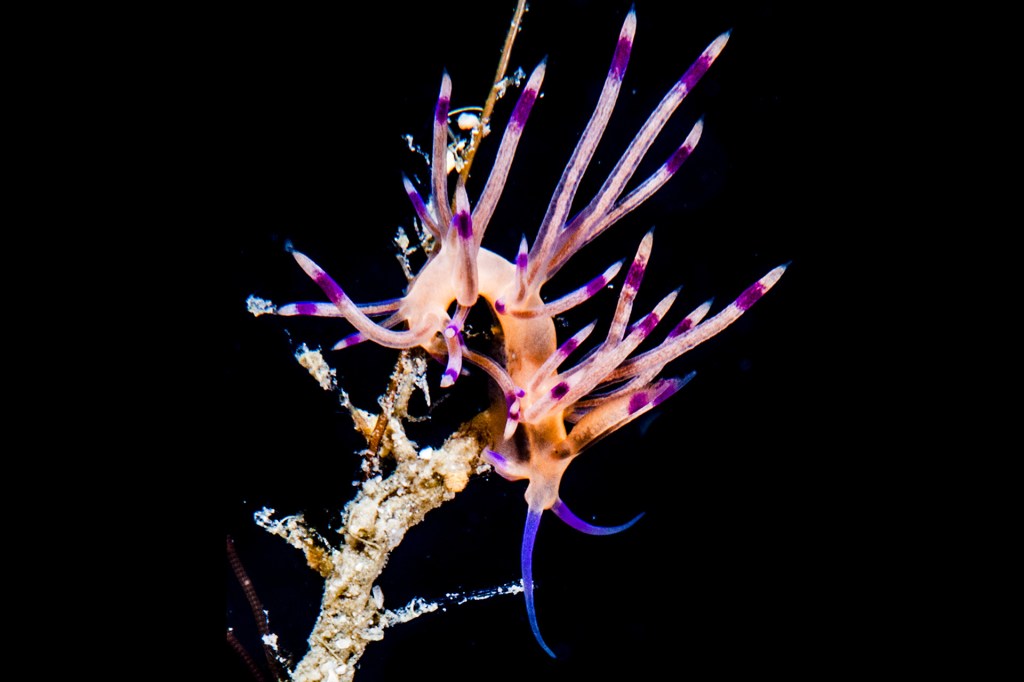
This nudibranch has long cerata. They have stinging cells at the tips.
GIORDANO CIPRIANI—GETTY IMAGES
“How do they [eat a stinging cell] without destroying it?” Goodheart asks. This information can help her team understand how the human immune system can evolve, or change.





